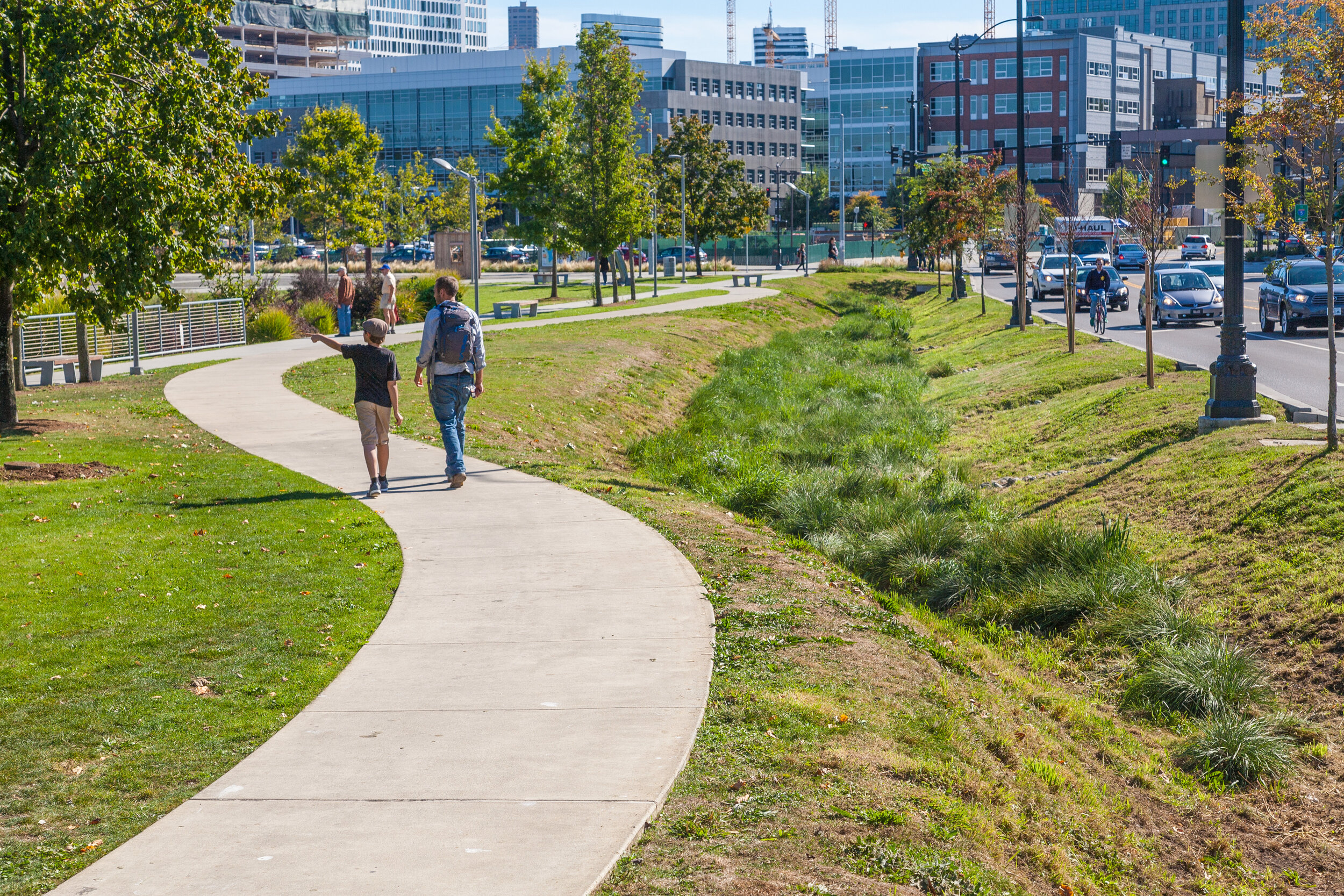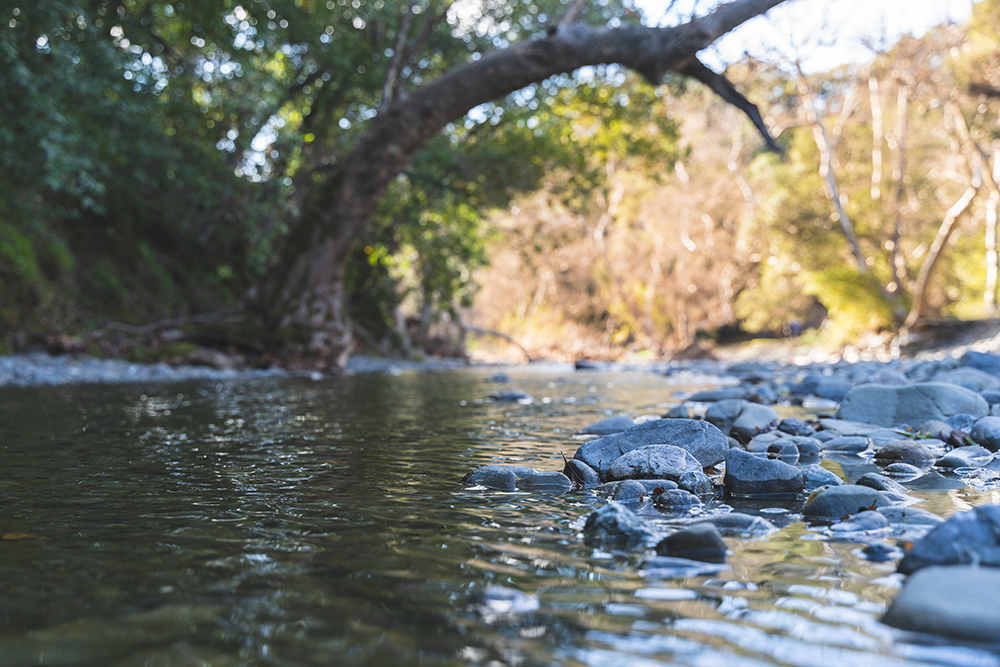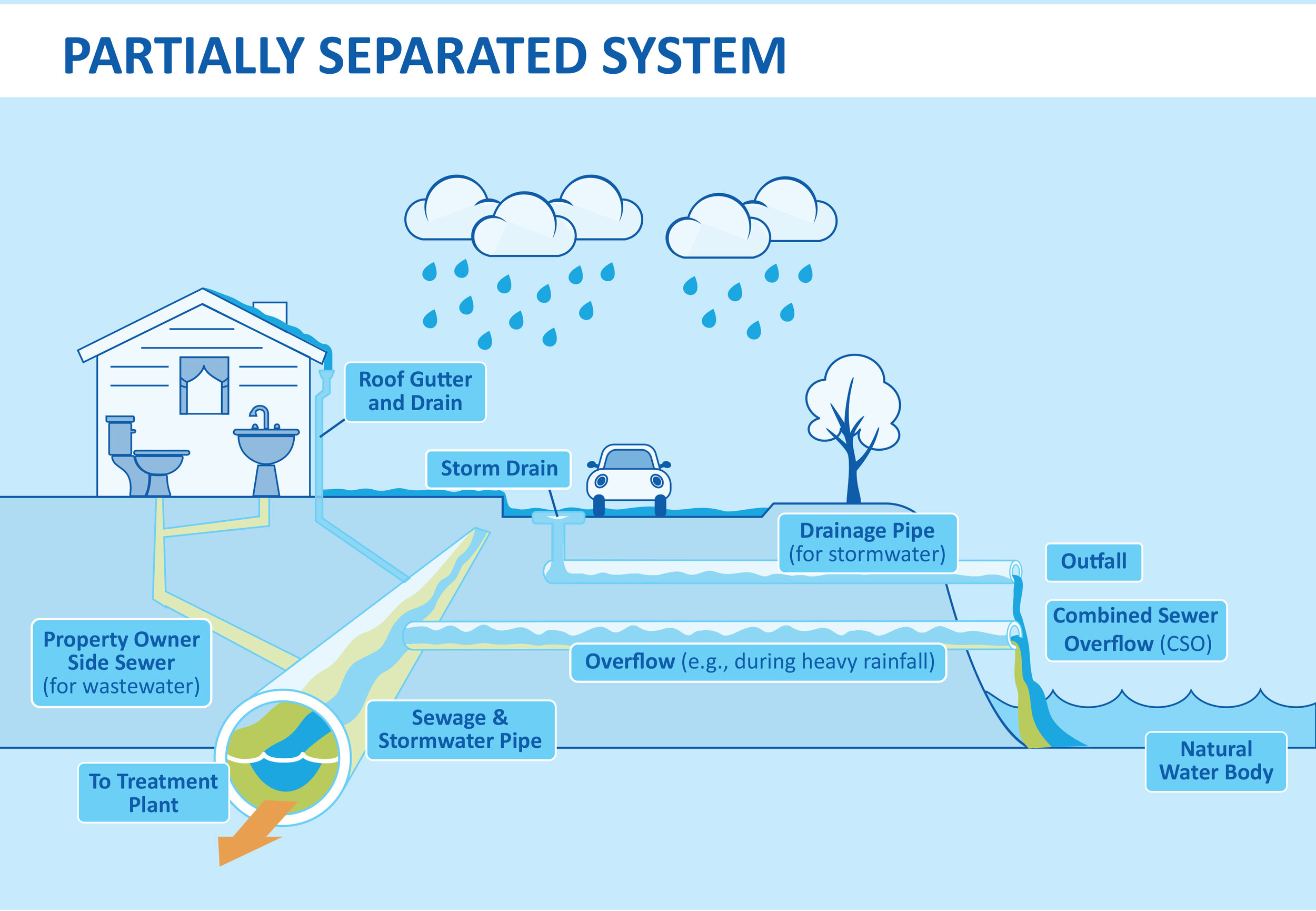
Drainage and wastewater
Drainage and wastewater systems shape Seattle in essential, invisible ways. Everyone in Seattle relies on a vast stormwater drainage and wastewater sewerage system.
Seattle Public Utilities builds and manages a drainage and wastewater system that affects how Seattle looks, feels and functions as water flows in, out, and around our city.
Every day, we interact with water by crossing canals, lakes, and even parts of Puget Sound to support our livelihoods and to connect with our communities. Water enters our homes and businesses as pure, clean drinking water and travels down our drains and toilets as wastewater. When it rains, we see water flowing off roofs, across streets and gardens, and into storm drains as stormwater.
All the while a vast, often unnoticed system of drainage and wastewater infrastructure is carrying wastewater to treatment, keeping our waterways clean and protecting our streets, homes, and businesses from flooding.

How have our landscape and communities
been shaped by water?
Learn more about the history of Seattle's sewer and drainage systems, the systems at work in your neighborhood, and how we're planning for the future in our interactive StoryMap.
Drainage and wastewater system analysis
The Shape Our Water project team has been busy analyzing how our current DWW system manages challenges like climate change, a growing population, and inequitable past investment.
Through gathering data on our current system’s water management performance, and analyzing the results for risks and opportunities, we have valuable real-world information that helps us collectively plan for future improvements.
Drainage and wastewater basics
Stormwater
Rain and melting snow that runs off of urban rooftops, lawns, streets, sidewalks, bridges, and parking lots and continues into drainage systems, like ditches, culverts, pipes, and rain gardens.
Wastewater
When we use water in our homes and businesses, drains move wastewater through private side sewers and into SPU-managed sewer pipes, pump stations, and storage tanks.
Seattle has a complex system of three types of sewers that move, or convey, stormwater and wastewater: combined, separated, and partially separated.
Water management needs collaboration
Seattle Public Utilities is working every day to improve our drainage and wastewater systems. Managing Seattle’s waters involves teams of people who collaborate to make sure system improvements also offer multiple benefits to our communities, from added neighborhood amenities to economic benefits for small businesses. We work closely with many governmental partners to design and build projects, from City of Seattle departments like Parks and Recreation or Neighborhoods to our regional and state partners like King County’s Wastewater Treatment Division and the Washington State Department of Ecology.
Community tours
Seattle is a national leader in building green stormwater infrastructure (GSI). GSI uses above ground drainage systems – including soil, trees, plants, pavers, natural landforms, even vegetated roofs – which convey, slow, and store stormwater, and filter out pollutants from our runoff.
GSI absorbs excess stormwater and can help prevent problems like combined sewage overflows, local flooding, and sewer backups. It can also bring unexpected benefits to communities that go beyond protecting the health of our families and our environment.
We invite you to discover natural water management projects that are hiding in plain sight! Take yourself on a self-guided community tour of drainage and wastewater projects that do double duty by providing drainage management alongside beautiful community spaces and parks.








